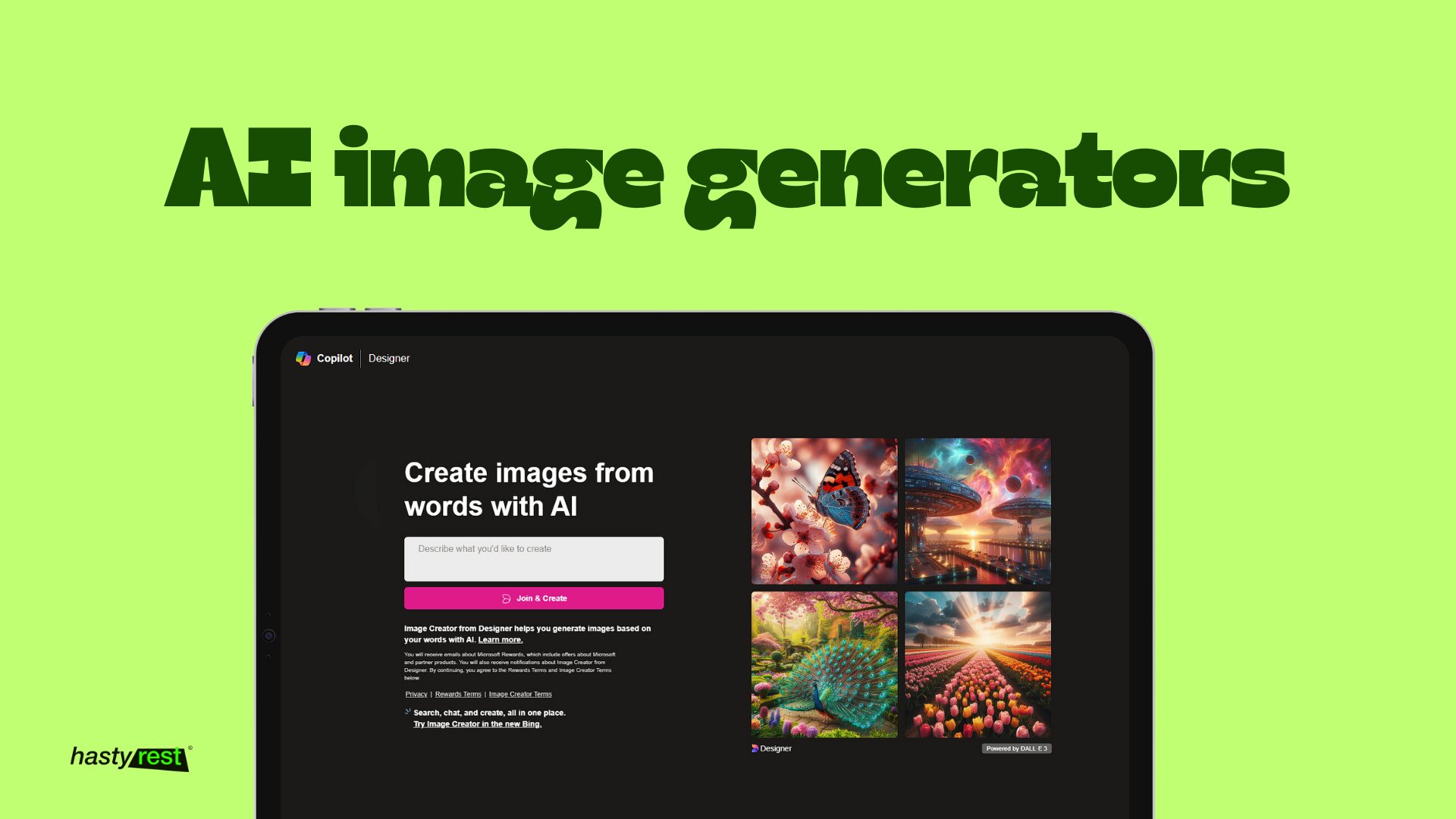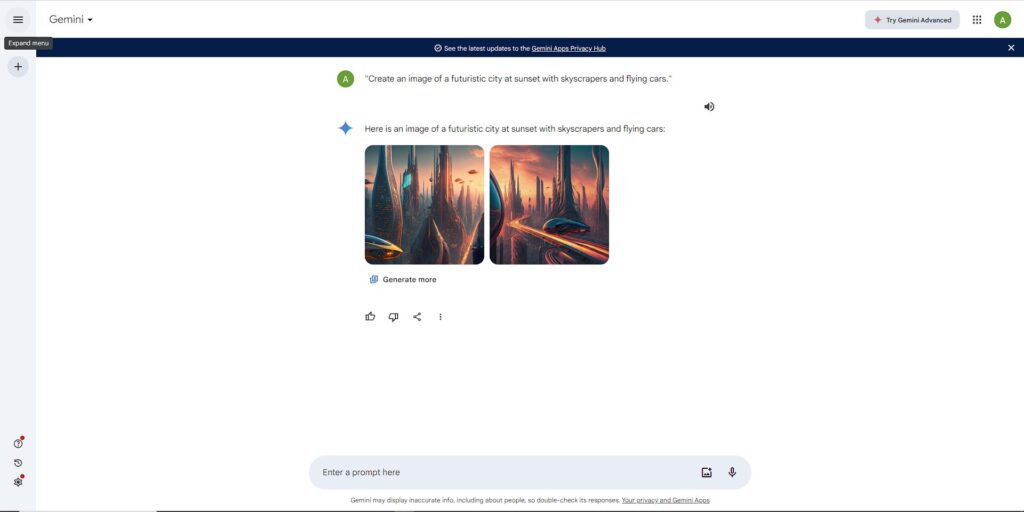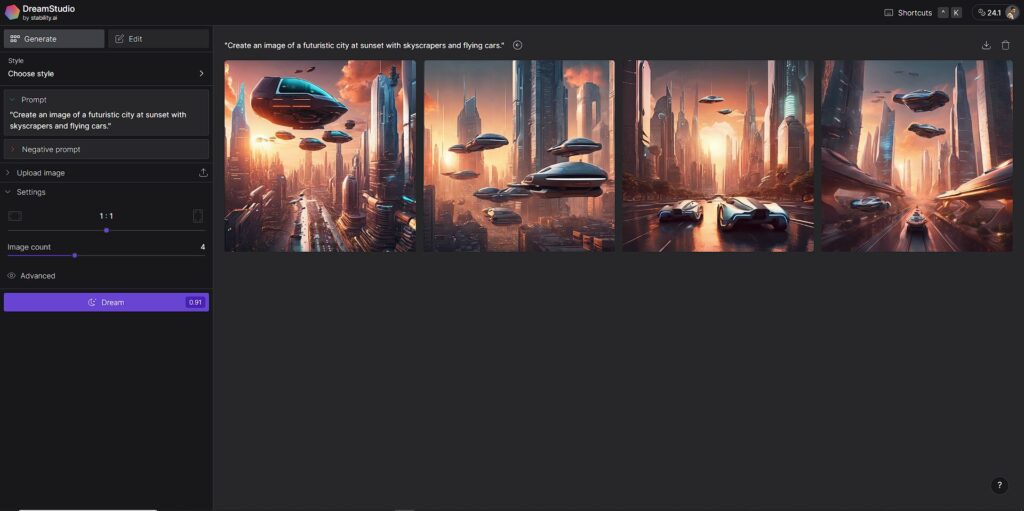The best AI image generators to try now in 2024
Artificial Intelligence (AI) has revolutionized numerous fields, and art is no exception.AI image generators is a fascinating intersection of technology and creativity, where algorithms and data come together to produce stunning visual pieces. Here, we explore some of the top platforms where you can experience and create AI-generated art.

Table of Contents
Exploring the World of AI-Generated Art: Top Platforms to Try
Artificial Intelligence (AI) has revolutionized numerous fields, and art is no exception. AI-generated art is a fascinating intersection of technology and creativity, where algorithms and data come together to produce stunning visual pieces. Here, we explore some of the top platforms where you can experience and create AI-generated art.
1. Bing Image Creator
Website: Bing Image Creator
Bing Image Creator allows users to create unique images through AI technology. By leveraging the power of generative AI, this platform helps users generate images based on textual descriptions. It’s an excellent tool for those looking to explore their creative ideas without any artistic skills required. The simplicity of Bing’s interface makes it accessible to beginners while still offering powerful capabilities for more advanced users.
| Pros | 1-User-friendly interface. 2-Quick and easy image generation. 3-Great for beginners and casual users. |
| Cons | 1-Limited customization options. 2-May not produce high-quality images for complex prompts. |
2. OpenAI DALL-E 3
Website: OpenAI DALL-E 3
OpenAI’s DALL-E 3 is one of the most advanced AI art generators available. This platform can create highly detailed images from textual descriptions, producing artwork that ranges from photorealistic to abstract. DALL-E 3’s capabilities include understanding complex prompts and generating imaginative outputs, making it a favorite among artists and enthusiasts looking for cutting-edge AI art solutions.
| Pros | 1-High-quality, detailed image generation. 2-Strong understanding of complex prompts. 3-Versatile, suitable for a wide range of artistic styles. |
| Cons | 1-Access is limited, often requiring a waitlist or subscription. 2-Can be expensive for frequent use. |
3. Google Gemini

Website: Google Gemini
Google Gemini is another formidable player in the AI art generation space. This platform is designed to offer a seamless experience for creating and experimenting with AI-generated images. Google Gemini’s integration with Google’s vast resources and data ensures that the generated art is both high quality and innovative. It’s a great choice for those who want to explore the potential of AI in art creation.
| Pros | 1-Seamless integration with Google’s ecosystem. 2-High-quality, innovative outputs. 3-User-friendly and accessible. |
| Cons | 1-AMay have limited features compared to more specialized platforms. 2-Integration with other tools or services might be lacking. |
4. DreamStudio

Website: DreamStudio
DreamStudio is an intuitive platform that allows users to generate artwork using AI. It offers a variety of tools and customization options, enabling users to fine-tune their creations to match their vision. Whether you’re looking to create digital paintings, illustrations, or other forms of art, DreamStudio provides the resources needed to bring your ideas to life with the help of AI.
| Pros | 1-Wide range of tools and customization options. 2-Intuitive and easy to use. 3-Supports various types of digital art. |
| Cons | 1-Can be resource-intensive, requiring a powerful computer. 2-May have a learning curve for beginners. |
5. Dream by Wombo

Website: Dream by Wombo
Dream by Wombo is a popular AI art generator known for its ease of use and wide range of artistic styles. Users can input text prompts to generate creative and unique images that can be used for various purposes, from personal projects to professional artwork. Dream by Wombo stands out for its vibrant community and the ability to share and discover art within the platform.
| Pros | 1-Very easy to use, suitable for all skill levels. 2-Offers a variety of artistic styles and filters. 3-Strong community and sharing features. |
| Cons | 1-Quality and detail may vary depending on the prompt. 2-Limited customization compared to more advanced platforms. |
Comparison of Platforms
User-Friendliness
- Bing Image Creator: Highly user-friendly, ideal for beginners.
- OpenAI DALL-E 3: More complex, suitable for experienced users.
- Google Gemini: Balanced interface, easy to navigate.
- DreamStudio: Intuitive but may require some learning.
- Dream by Wombo: Extremely easy to use for all skill levels.
Customization Options
- Bing Image Creator: Limited customization.
- OpenAI DALL-E 3: Extensive customization available.
- Google Gemini: Moderate customization options.
- DreamStudio: Wide range of tools and settings.
- Dream by Wombo: Limited but effective customization.
Quality of Output
- Bing Image Creator: Good for simple prompts.
- OpenAI DALL-E 3: High-quality, detailed images.
- Google Gemini: High-quality, innovative outputs.
- DreamStudio: Excellent quality with fine-tuning.
- Dream by Wombo: Quality varies but generally good.
Use Cases of AI-Generated Art
Personal Projects
AI art generators are fantastic for personal projects, allowing individuals to create unique artwork without needing traditional artistic skills.
Professional Use
Professionals can leverage AI-generated art for marketing, design, and creative projects, offering a new dimension to their work.
Educational Purposes
Educators can use AI art to teach concepts in technology, creativity, and digital media, providing a hands-on learning experience.
Future of AI in Art
Innovations on the Horizon
The future of AI in art is bright, with advancements in technology promising even more sophisticated and creative outputs.
Potential Developments
Expect more user-friendly interfaces, better customization options, and higher-quality outputs as AI technology continues to evolve.
Tips for Getting Started with AI Art Generators
Choosing the Right Platform
Consider your needs and skill level when selecting an AI art generator.
Understanding Text Prompts
Learn how to write effective prompts to get the best results from your chosen platform.
Experimenting with Styles
Don’t be afraid to try different styles and settings to discover what works best for your vision.
Challenges in AI-Generated Art
Ethical Considerations
AI-generated art raises questions about originality and ownership that need careful consideration.
Quality Control
Ensuring consistent quality can be challenging, especially with complex prompts.
Creative Limitations
While AI can generate art, it may lack the nuanced creativity of human artists.
Community and Collaboration
Online Communities
Join online communities to share your work, get feedback, and collaborate with others.
Collaborative Projects
AI art platforms often host collaborative projects, allowing users to work together and learn from each other.
Monetizing AI-Generated Art
Selling Artwork
Many platforms allow you to sell your AI-generated art, providing a potential income stream.
Offering Services
You can offer custom AI art creation services to clients, leveraging your skills and creativity.
Conclusion
AI-generated art is an exciting frontier that merges technology with creativity, offering endless possibilities for artists and non-artists alike. Platforms like Bing Image Creator, OpenAI DALL-E 3, Google Gemini, DreamStudio, and Dream by W







